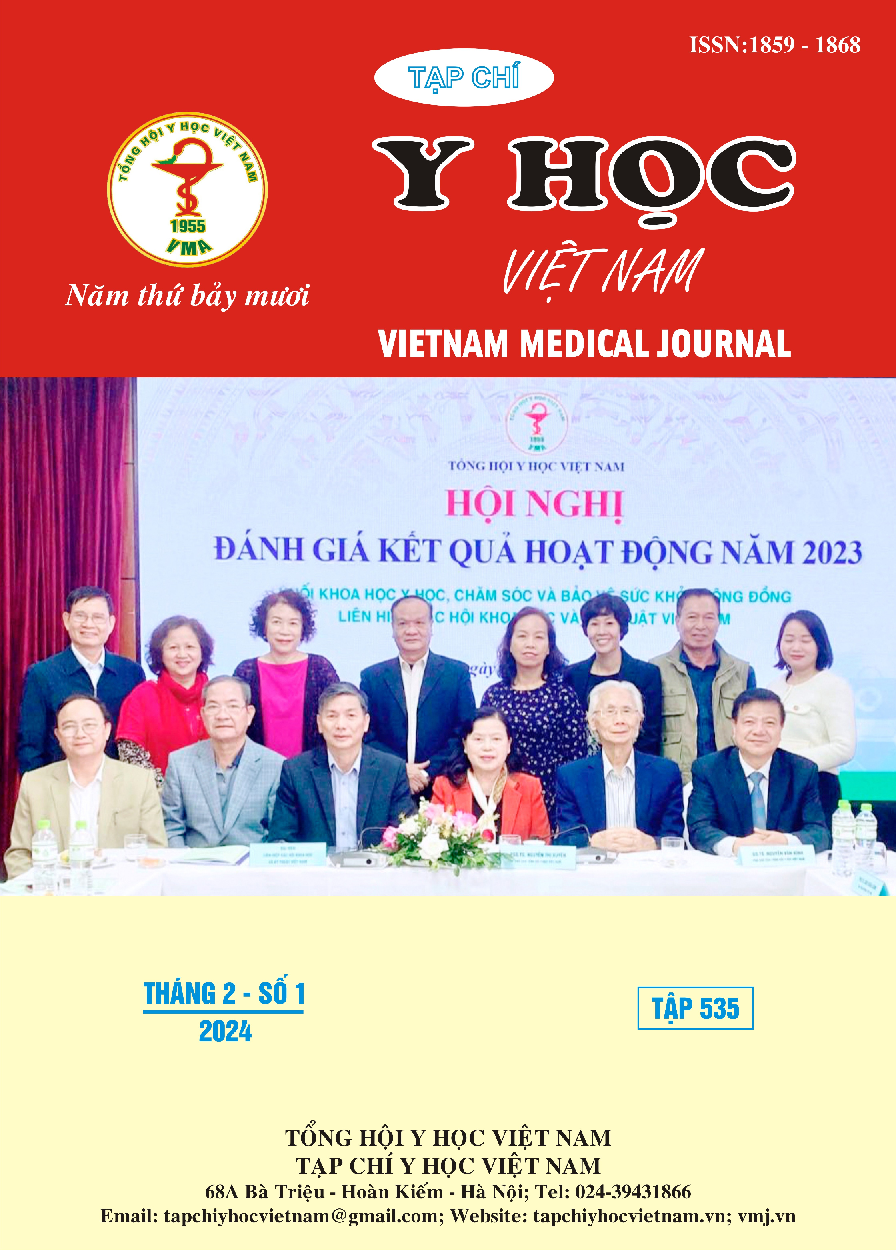SURVEY OF PULMONARY ARTERY PRESSURE INDEX USING CARDIAC DOPPLER ULTRASONIC IN PEOPLE WITH STAGE 3 - 5 KIDNEY DISEASE WITHOUT ALTERNATIVE TREATMENT
Main Article Content
Abstract
Objectives: To investigate the relationship between pulmonary artery pressure index on Doppler echocardiography and some clinical and paraclinical parameters in people with chronic kidney disease stages 3 - 5 who have not received alternative treatment at the Bach Mai hospital. Subjects and methods: Cross-sectional descriptive study of 102 patients with chronic kidney disease stages 3 - 5 who have not received alternative treatment at the Kidney - Urology and Dialysis Center of Bach Mai Hospital from January 2023 to October 2023. Results: The average age of the study subjects was 54.68 ± 17.2 years old, the youngest was 18 years old, and the oldest was 83 years old. Female patients account for a higher proportion of 51%. The average pulmonary artery pressure (PAPs) in the study was 33.79 ± 9.5 mmHg, the lowest was 20mmHg, and the highest was 67mmHg. The rate of increased PAPs in stage 5 kidney disease is 75%, stage 4 is 15% and stage 3 is 10%. The rate of increased PAPs in patients with mild anemia is 40%, and in patients with moderate anemia is 60%. PAPs do not depend on the patient's age or BMI. PAPs were negatively correlated with left ventricular ejection fraction (r=-0.389, p = 0.0), and positively correlated with longitudinal right ventricular diameter (r=0.302, p =0.002). Conclusion: PAPs depend on the stage of chronic kidney disease, the more severe the stage, the higher the rate of increase in PAPs. PAPs are related to the patient's anemia, negatively correlated with left ventricular ejection fraction, and positively correlated with longitudinal right ventricular diameter.
Article Details
References
2. Prins KW, Thenappan T. WHO Group I Pulmonary Hypertension: Epidemiology and Pathophysiology. Cardiol Clin. 2016;34(3):363-374. doi:10.1016/j.ccl.2016.04.001
3. Augustine DX, Coates-Bradshaw LD, Willis J, et al. Echocardiographic assessment of pulmonary hypertension: a guideline protocol from the British Society of Echocardiography. Echo Res Pract. 2018;5(3):G11-G24. doi:10.1530/ ERP-17-0071
4. Topyła-Putowska W, Tomaszewski M, Wysokiński A, Tomaszewski A. Echocardiography in Pulmonary Arterial Hypertension: Comprehensive Evaluation and Technical Considerations. J Clin Med. 2021;10(15):3229. doi:10.3390/jcm10153229
5. Reque J, Garcia-Prieto A, Linares T, et al. Pulmonary Hypertension Is Associated with Mortality and Cardiovascular Events in Chronic Kidney Disease Patients. Am J Nephrol. 2017;45(2):107-114. doi:10.1159/000453047
6. Li Z, Liang X, Liu S, et al. Pulmonary Hypertension: Epidemiology in Different CKD Stages and Its Association with Cardiovascular Morbidity. PLoS ONE. 2014;9(12):e114392. doi:10.1371/journal.pone.0114392
7. Suresh H, Arun BS, Moger V, Vijayalaxmi PB, Murali Mohan KTK. A Prospective Study of Pulmonary Hypertension in Patients with Chronic Kidney Disease: A New and Pernicious Complication. Indian J Nephrol. 2018;28(2):127-134. doi:10.4103/ijn.IJN_36_17
8. Navaneethan SD, Roy J, Tao K, et al. Prevalence, Predictors, and Outcomes of Pulmonary Hypertension in CKD. J Am Soc Nephrol JASN. 2016;27(3):877-886. doi:10.1681/ ASN.2014111111


